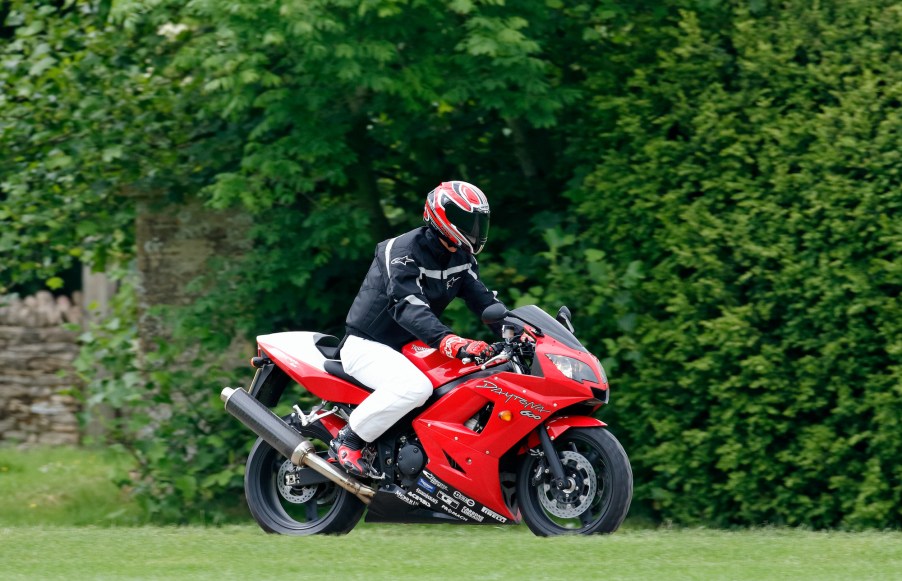
The Best Motorcycle Helmet Latch May Surprise You
Motorcycle helmet safety has been an important topic for decades. A helmet is definitively the top piece of safety equipment needed for riders. As important as wearing a helmet while riding a motorcycle is wearing a well-fitting, DOT-approved helmet. With so many options and styles, it’s important to know the best choice for latches that fasten motorcycle helmets.
The history of motorcycle helmet latches

The double D latch is the classic and standard style when it comes to motorcycle helmets. The style of the double D latch dates back to 14th-century Rome, FortNine reports. At that point, it was a design used for belt buckles, which remains a common application to this day.
Besides the double D latch, another easily recognizable closure for many motorcycle helmets is the side release buckle. This iconic plastic buckle style also fastens tons of products, from duffel bags to shopping cart lap belts for children. A man named Dick Tracy patented the design in 1979, FortNine explains.
In 1997, Burton Snowboards patented a ratcheting binding strap used to fasten soft boots to snowboards. Although this clip design doesn’t seem ideal for use with helmets because of its high tension, FortNine notes that some helmets in Europe use this strap.
Only five years old, the most recent addition to the motorcycle helmet latch lineup is the German-designed Fidlock self-locking magnetic closure. This latch was designed for motorcycle helmets, but according to FortNine, this is a particularly over-engineered design.
How these helmet latches were tested
FortNine conducted a test to see which of these buckles was the strongest at a certain amount of pressure. To figure this out, testers fastened the straps to a wooden form resembling the shape of a chin.
Then testers extended a scissor jack to see if the buckles would hold before the strap broke. The baseline was that the straps needed to withstand at least 900 pounds of pressure to ensure they didn’t break before the latch did. Basically, the buckles need to be strong enough to hold the motorcycle helmet on a rider in the event of an accident.
If the latch closure broke before the strap on the helmet, it would mean a potentially deadly situation for the rider because their helmet would no longer be secure on their head.
The results of the test
The side-release plastic buckle, which is the most popular choice for bicycle helmets, was the weakest. It broke at just 5.82 Newton-meters of pressure, which converts into about 4.3 lb-ft of torque or 329 pounds of lift force from the scissor jack.
The Burton Snowboards ratcheting buckle withstood more pressure but broke before the strap at 9.81 Newton-meters, which equals about 7.24 lb-ft of torque or 555 pounds of lift force from the jack. Not only that, but the force of the buckle breaking even broke a hole in a Plexiglas barrier protecting the camera.
The German Fidlock magnetic closure didn’t fail until 13.49 Newton-meters of pressure was applied, or approximately 9.96 lb-ft of torque or 763 pounds of lift force from the scissor jack. Although it held up to more pressure than the previous two closures, it still failed before the strap did. That means that regardless, it is still a dangerous choice for a motorcycle closure.
The surprising winner of the test, performing as it should have, was the classic double D latch closure. It was the only buckle or closure tested that didn’t break before the strap did. At 15.91 Newton-meters, or about 11.74 lb-ft of torque or 900 pounds of lift force from the jack, the strap failed, but the double D helmet latch remained intact.
So, when you’re deciding which latch style is the safest, go with the centuries-old classic design: the double D motorcycle helmet latch.


